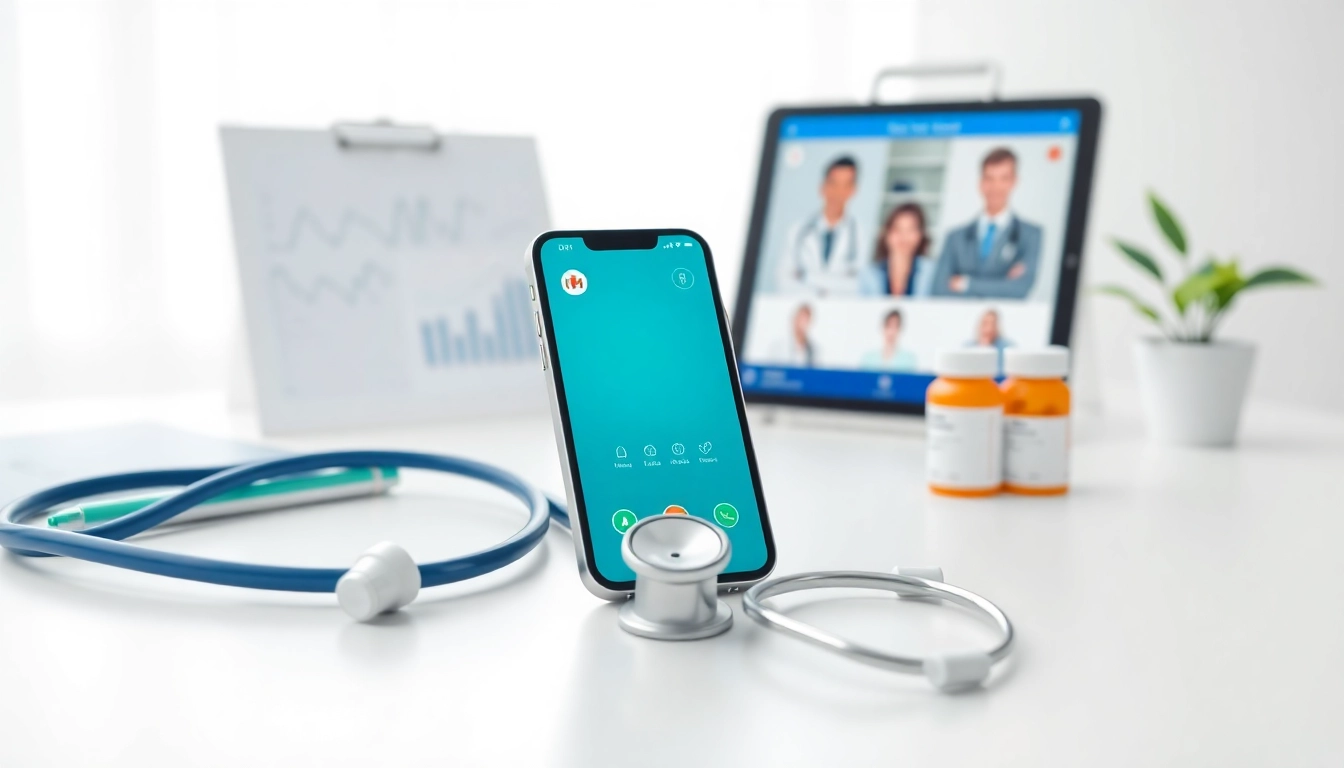Understanding Top Rated Prescription Applications
In the rapidly evolving landscape of healthcare, top rated prescription applications have emerged as vital tools for both patients and healthcare providers. These applications are not merely digital conveniences; they represent the intersection of technology and healthcare, designed to improve patient care, streamline prescribing processes, and ultimately enhance health outcomes. This article delves into the significant roles, features, and future trends of these applications to provide you with a comprehensive understanding of their impact on healthcare.
The Role of Technology in Healthcare
The integration of technology into healthcare has transformed traditional practices, creating new pathways for diagnosis, treatment, and patient engagement. From electronic health records (EHRs) to telehealth services, technological advancements have made healthcare more accessible and efficient. Prescription applications are a part of this trend, allowing patients to manage their medications through their smartphones. They provide tools for scheduling reminders, checking medication interactions, and even connecting with pharmacies for refills.
What Makes an App Top Rated?
Identifying a top-rated prescription app involves evaluating several key factors. These include:
- User Experience: A clean, intuitive interface that allows for easy navigation.
- Functionality: Comprehensive features that cover refills, drug interactions, and reminders.
- Integration: Ability to integrate with health systems and pharmacies seamlessly.
- Security: Robust data protection to safeguard patient information.
- User Ratings: Positive feedback and high ratings from users in app stores.
Benefits of Using Prescription Apps
Prescription applications offer numerous benefits for both patients and healthcare professionals:
- Convenience: Users can manage prescriptions anytime, anywhere, removing the need for physical visits to pharmacies.
- Improved Compliance: Reminders and educational content help patients adhere to their medication schedules.
- Cost Efficiency: Price comparison features can help users find more affordable medication options.
- Increased Engagement: Empowering patients with information helps them take control of their health.
Main Features of Top Rated Prescription Applications
User-Friendly Design and Navigation
The UI/UX design of an application significantly impacts user satisfaction. A straightforward and intuitive design enables users of all ages, including the elderly, to navigate the app effortlessly. Popular features include large buttons, clear labels, and voice commands to enhance accessibility.
Integration with Pharmacies and Health Systems
Top rated prescription applications often feature integration with various pharmacies and health systems, allowing for streamlined prescription refills and the transfer of prescriptions directly to the pharmacy. This not only saves time for users but also reduces errors in medication management, ensuring that patients receive the correct prescriptions promptly.
Secure Patient Data Management
Given the sensitive nature of health information, robust security measures are a hallmark of top rated prescription applications. Using encryption, two-factor authentication, and regular security audits ensures that patient data is protected from unauthorized access. Compliance with regulations, such as HIPAA, is imperative for applications managing health information.
Evaluating Effectiveness: Comparison of Top Rated Prescription Applications
Key Performance Metrics
Performance metrics are essential for evaluating the effectiveness of prescription applications. Key metrics include:
- App Usage: The frequency of app use can indicate user engagement.
- Medication Adherence Rates: Tracking users’ medication adherence before and after app use can showcase its effectiveness.
- Feedback and Reviews: Analysis of user feedback helps identify strengths and weaknesses in services provided.
User Feedback and Ratings
User feedback plays a crucial role in determining an app’s reputation. High ratings on app stores often correlate with positive user experiences. Engaging users in surveys and collecting testimonials can provide valuable insights into the app’s efficiency and areas for improvement.
Case Studies on Usage and Outcomes
Examining real life case studies reveals how top rated prescription applications are being utilized across diverse populations. For instance, studies showing reduced hospital readmission rates among users of a specific app highlight its effectiveness in improving medication adherence and patient outcomes. Case studies can also illustrate how apps can educate users about their medications, thus enhancing their understanding and management of their health conditions.
Staying Compliant: Regulations Surrounding Prescription Applications
Understanding HIPAA and Patient Privacy
Preserving patient privacy is paramount in the healthcare sector, and prescription applications are not exempt from adhering to regulations like the Health Insurance Portability and Accountability Act (HIPAA). This act mandates strict protocols concerning the management and sharing of patient data to prevent unauthorized access.
App Certification and Safety Standards
To ensure maximum safety and reliability, prescription applications are often subject to certification processes. These certifications typically assess compliance with clinical guidelines and safety standards, ensuring the app meets high-quality benchmarks before reaching consumers.
Adhering to State and Federal Guidelines
In addition to HIPAA, prescription applications must navigate various state and federal regulations impacting prescription management. Understanding and complying with these guidelines is crucial for app developers and healthcare professionals to avoid legal complications.
Future Trends in Top Rated Prescription Applications
The Rise of AI and Machine Learning
Artificial Intelligence (AI) and machine learning are set to revolutionize how prescription applications function, enabling personalized health recommendations based on user data. This technology can analyze patterns and predict health issues, thereby offering proactive assistance in medication management.
Telemedicine and Remote Prescribing
Telemedicine continues to gain traction, allowing healthcare providers to prescribe medications remotely. Top rated prescription applications are likely to integrate telehealth features, offering consultations and instant prescriptions, which will enhance convenience for users further.
Predictions for User Engagement and Features
As technology advances, user engagement will likely focus on interactive features such as gamified health challenges, social sharing capabilities, and telehealth integration within prescription applications. The goal will remain to provide a holistic approach to medication management, ensuring users are active participants in their healthcare journeys.
